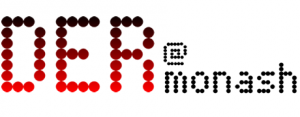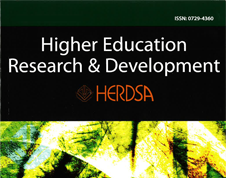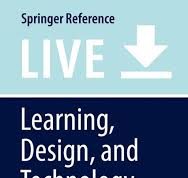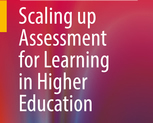by Phillip Dawson
The literature is filled with claims about what makes for effective feedback, for example, feedback that focuses on student self-regulation; feedback designs that require students to act on the comments they receive; and feedback that is timed so students can act on it. But what about what makes for ineffective feedback?

This was a topic of discussion at a recent research retreat with my colleagues on the OLT Feedback for Learning Project. Critical in this conversation was feedback legend David Boud as well as audio/video/screencast feedback gurus Michael Henderson and Mike Phillips. Our project evaluator, David Carless, known for his work in sustainable feedback also joined in. This discussion began as a thought exercise, to further stimulate our thinking around the critical issues of feedback as we entered into the second day of data analysis. In this exercise the project team was challenged to draw on their expertise to consider the conditions or designs that are counterproductive or lead to ineffective feedback.
The team generated a multitude of ideas about what constitutes ineffective or even destructive feedback. While that thought exercise led to further data analysis and insights, we felt that the ideas that had been generated could be usefully illustrative. After some consideration, here are my top eight ways to make feedback ineffective or even destructive:
- Try to be a hero and plan to spend way too much teacher time on feedback
We all have a lot to do. My number one way to fail in feedback is when teachers plan feedback designs that are too labour-intensive. Balancing the need for effective feedback with sustainable work models is a fundamental condition for ongoing success.
- Be a cognitive miser and focus on feedback that is easy to give
I don’t know about you, but I can do spelling and grammar comments on autopilot. This doesn’t make them good feedback information. Some editorial input is valuable, but students also want feedback that is criterion-referenced and attends to deeper issues. Spelling and grammar comments in lieu of substantive feedback is a great example of the cognitive shortcut of ‘answering an easier question’.
- Apportion feedback time based on the percentage allocated to the task
To get the worst value out of your feedback time, you should spend most of it justifying the grade on the task worth the most marks – usually the final task of a unit. However, to get the best value out of your time you should spend it on earlier tasks, which paradoxically usually have the smallest weighting. That way students can do something with the feedback.
- Assume that students won’t read your feedback
We’ve all seen piles of uncollected assignments sitting in a box. The markers’ feedback comments made on those assignments never had any impact. However, this doesn’t mean it’s the norm. In fact, our large-scale survey of over 3000 students across two universities indicates that the majority of students want to read the feedback comments. However, the question of whether they read it or not can distract us from asking a more fundamental question: why should they read it? Unless the feedback comments are useful, particularly when they have a direct connection to the next task in a sequence of tasks, we shouldn’t be overly righteous or indignant if students choose not to read.
- Get students hooked on your feedback
Many of us got into education because we want to help students. However, it is ironic that some of our efforts to help students can actually be counter-productive in the long term. In fact, many feedback practices that sound helpful don’t support students to develop independence. If you would prefer to trap students into teacher feedback dependence you should: provide too much feedback; provide feedback on every part of every task; focus feedback solely on the immediate task rather than on improvement for the future; focus feedback on the product rather than the process or skills; never give students the opportunity to judge their own work; and not let students talk with each other about the quality of their work.
- Wait until the students have submitted their work before thinking about feedback
Waiting until after submission to design feedback means you have a severely limited range of options available to you, particularly with regards to role of students in feedback (self and peer) as well as the extent feedback can be used to connect assessment sequences. Feedback needs to be designed at the same time, and with as much rigor and forethought as the assessment itself. Indeed, the two are closely entwined. Our answers to questions about feedback inevitably change the assessment designs. For example, will students self-assess prior to submission? How will this task build on previous tasks and connect to subsequent tasks? How will you leverage peers to provide feedback? Feedback design should not come after assessment has commenced – feedback is a fundamental part of assessment design decisions.
- Blindly shoot the feedback cannon at students
The illustration depicts a cannon firing feedback comments into the unknown. Here, feedback is something being done to students, with little regard of the effect. This really does represent the ‘bad old days’ of teacher-centred feedback, where we thought of feedback as something done to students. However, more modern understandings of feedback regard it as a process that occurs within students. Yes, we can provide students with information about their performance, but that does not mean feedback will occur. It is the educator’s responsibility to not just generate comments, but to craft those comments within an overarching design that enables students to do something with them.
- Never get students to evaluate their own work
An understanding of what quality work looks like is critical for anyone who wants to systematically improve their work. A great way to ensure students remain dependent, directionless and flailing around in a state of trial and error is to never give them a chance to develop their ability to make quality judgments. As an example, let’s say you use a rubric to assess student work. A particularly ineffective approach would be to never show students this rubric. A more effective approach would be to give it to students with the task as a way to help them understand how you will judge their work. An even more effective approach would be to ask them to self-assess on the rubric, and then to focus your feedback comments on where their judgement and your judgement differ.
There are many other ways we can make feedback ineffective. However, these eight stand out as things we see time and time again – often with good intentions. If you’d rather know some approaches to make feedback effective, keep an eye on The Feedback for Learning project website for our forthcoming resources.
Author: Phillip Dawson is associate professor and associate director of the Centre for Research in Assessment and Digital Learning (CRADLE), Deakin University.
Illustration: created for the Feedback for Learning project by Simon Kneebone.
Acknowledgement: This article is reproduced with permission from the Feedback for Learning website.







